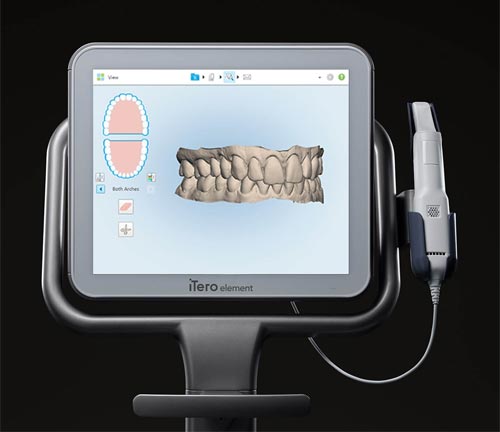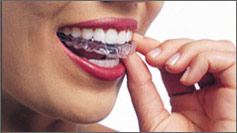Invisalign
We offer the latest in Invisalign technology
At Princeton Dentistry, we have made the process of Invisalign more innovative for our patients. With the iTero 3D scanner, it eliminates the necessary traditional impressions required for the start up process. This is a state-of-the-art technology which digitally captures the anatomy of the teeth.
Dr. Hanian and his staff have gone through extensive training to learn how to use the iTero scanner efficiently. The iTero scanner is fast and accurate which allows our well-trained team to show our patients an outcome simulation of what their results may be after Invisalign treatment. For patients who are currently undergoing Invisalign treatment, a scan can be taken to evaluate the progression of their treatment thus far. Using the iTero scanner, it will also expedite the start of the Invisalign procedure and guarantee a better fit of each aligner.

Invisalign is the virtually invisible way to straighten your teeth without braces, using a series of clear, removable aligners to straighten your teeth without metal wires or brackets. You wear each set of clear aligners for about two weeks, removing them only to eat, drink, brush, and floss. As you replace each aligner with the next in the series, your teeth will move - little by little, week by week - until they have straightened to the final position your orthodontist or dentist has prescribed. You'll visit your orthodontist or dentist about once every six weeks to ensure that your treatment is progressing as planned.
Total treatment time averages 9-15 months and the average number of aligners worn during treatment is between 18 and 30, but both will vary from case to case.
The latest in 3D scanning technology
We are fully trained to get a 3D image of your teeth in minutes!

How does Invisalign work?
An Invisalign-trained dentist will utilize 3D computer imaging technology to demonstrate the complete treatment plan from the initial position to the final desired position. This imaging technology is then used to design an individualized series of custom-made aligners. The patient wears the aligner for about two weeks while the teeth move incrementally. After two weeks, the current aligner is replaced with the next one until the final position is achieved.
What do aligners look like?
Aligners are clear and nearly invisible. If you've ever seen clear tooth-whitening trays, that should give you a good idea of what the aligners look like. Invisalign aligners are custom-made to fit and move your teeth.


Will the treatment be painful?
Each time you change to a new aligner, there may be some temporary discomfort while your teeth adjust to their new position. This is completely normal, and is a good sign that the treatment is working.
Will wearing Invisalign aligners affect my speech?
Some people are affected more than others, but most adjust in a short period of time to the feeling of the aligners and do not have permanent changes in their speech.
How often will I have to wear my aligners?
Invisalign only works while you're wearing the aligners. It's recommended that you wear your aligners full-time, day and night, except to eat, brush, and floss your teeth.
How much does Invisalign cost?
Cost is always a concern, and only your doctor can determine the price of treatment. It is typically in the same range as ordinary metal braces, ranging from $3,000 to $5,000 or more, depending on the requirements of your case.
Does Invisalign really work?
Yes. In orthodontic and dental practices nationwide, Invisalign has been proven effective at straightening teeth.
Does insurance cover Invisalign?
Any insurance plan that covers orthodontics should cover Invisalign.
